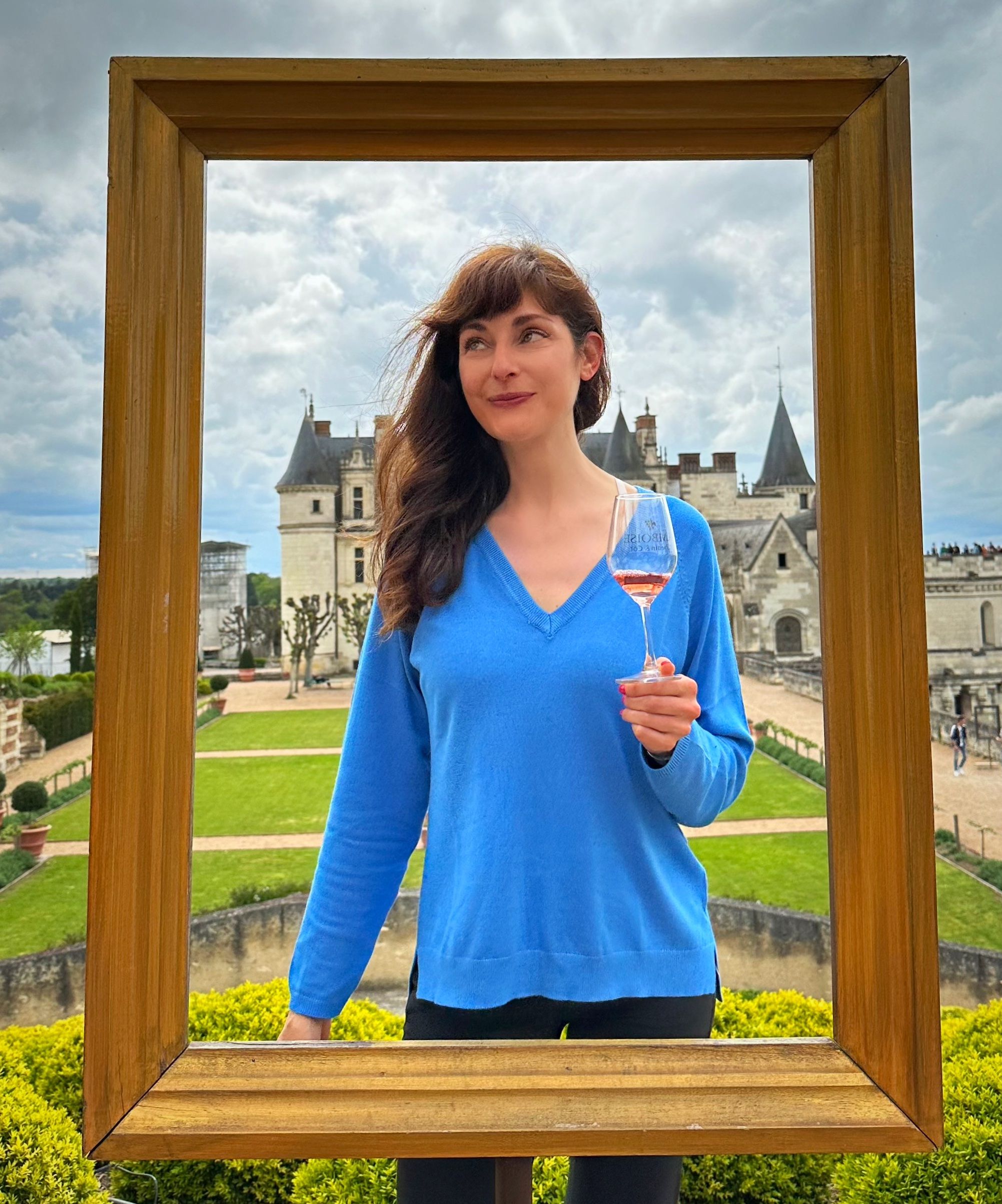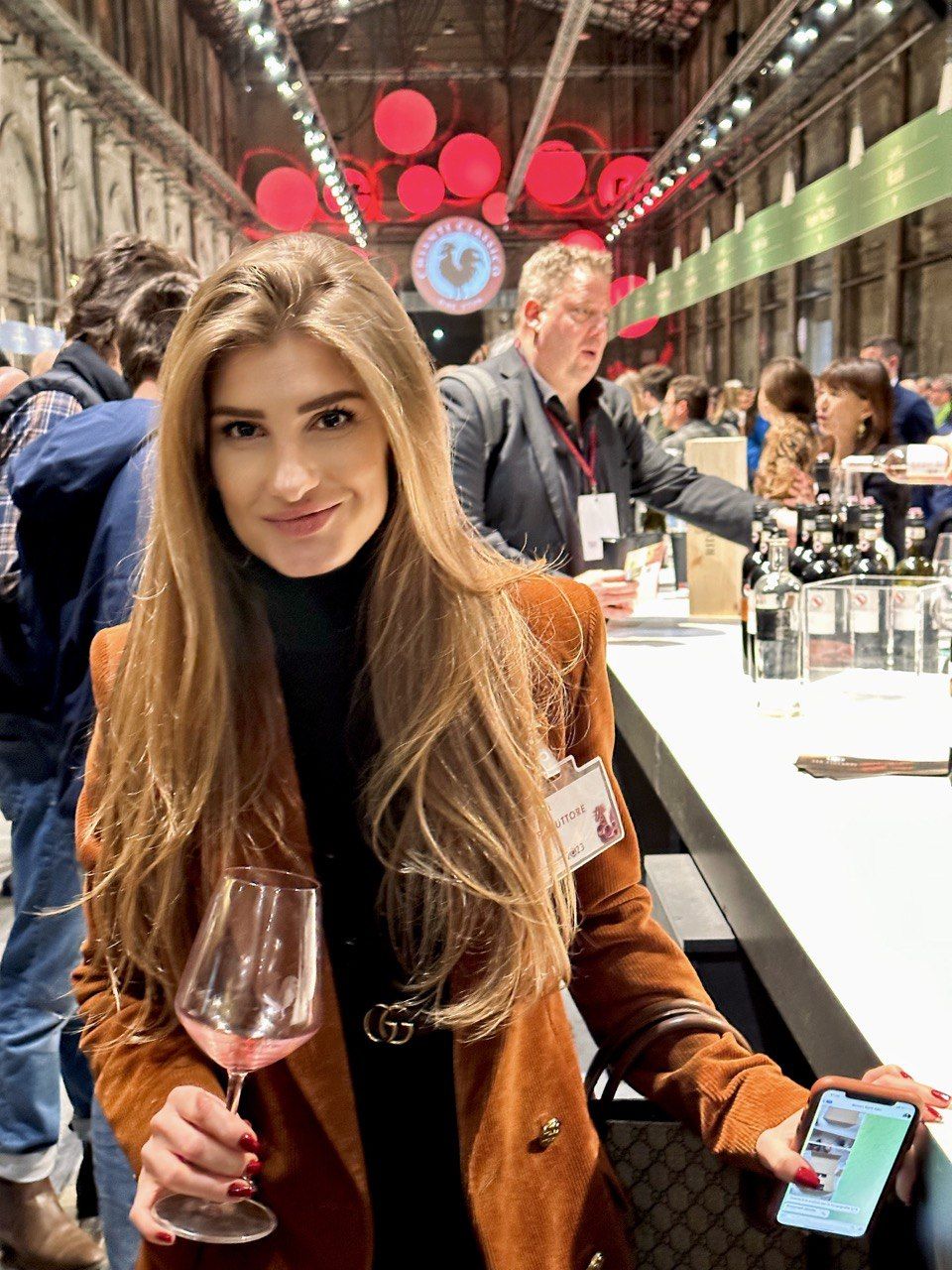Inside a natural cork
From Portugal’s forests to the bottle
When we uncork a bottle of wine, of the cork we generally care about two things: that it does not break and that it has not contributed to impair strange odors to the wine, in short, that it has held up preserving the wine without carrying the famous TCA, the trichloroanisole molecule responsible for the “corky” smell. Which then is actually a musty smell, but often times all the blame is placed on the cork, which especially if it is natural cork, is the first scapegoat.
We pull it out, smell it (some people even smell plastic ones, never mind), and seconds later we forget about it. Our relationship with the cork lasts less than a minute.
Yet behind that cylinder of cork there are decades of history and work: at least 30 years from the young plant for the first harvest, whole lifetimes dedicated to the art of hulling, there are also the best engineering minds that have come up with all the possible and applicable systems to make those sixty seconds of opening the bottle make us nod in satisfaction and not curse at the cork that, precisely, takes all the blame, even the ones it does not have.
Thanks to Amorim cork, the world’s largest cork processing and manufacturing company founded in 1870 (think 28 percent of wine closures are produced by the Amorim Group), I discovered the world behind that little cylinder, from the plant to the bottle. In the next few paragraphs, I will tell you what I experienced and learned during a press trip to Portugal, the country that produces the most cork in the world, with more than 60 percent of the total export volume and an area planted with cork oaks that constitutes a quarter of that existing on earth.
Decorticating is a job for a few
It all starts with the SUBER oak forests (quercus SUBER is the botanical name of the species), which we flew over in a hot air balloon at dawn light in Alentejo , called the Cork County, on the border with Spain.
Here is the video account of my first hot air balloon flight.
From up there I could appreciate the pristine expanses, Portugal’s green lung, where cork and other plantations are grown.
The Amorim group buys 40 percent of the world’s cork and also owns 8350 hectares of forests tended by specialized farms.
Of these 8350 hectares, almost 3,000 are new plantings, part of a reforestation project in which some wineries will also participate, thus creating a virtuous circle in the wine supply chain with the aim of cutting CO2 emissions while producing natural corks, which are necessary for the same supply chain.
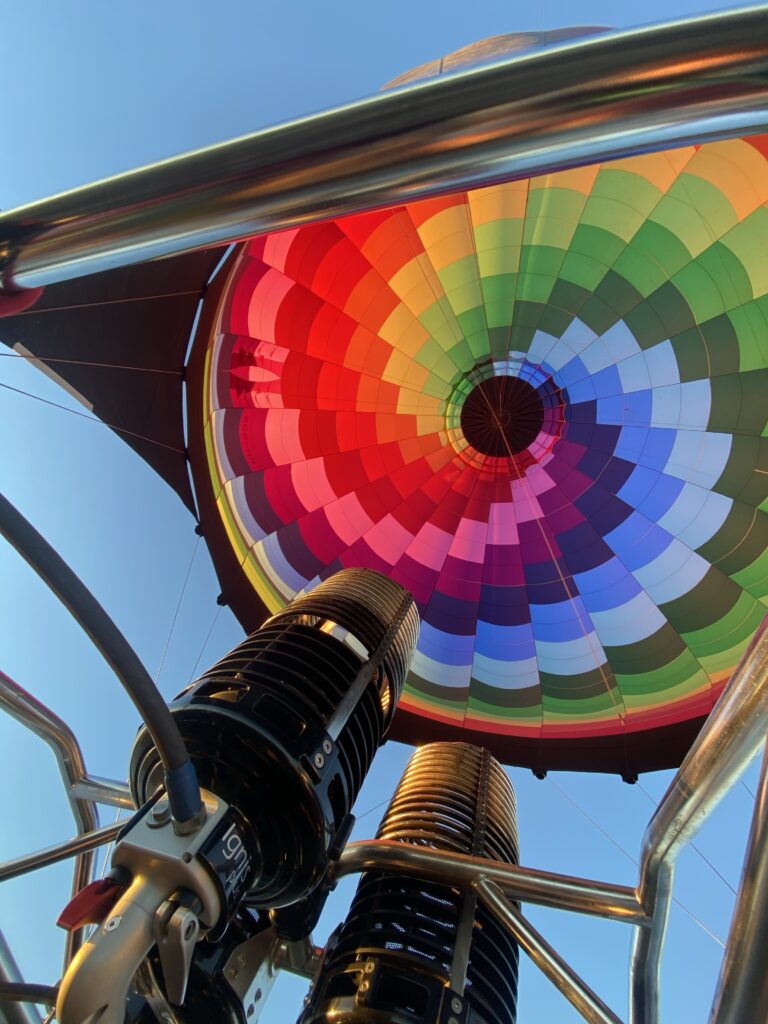

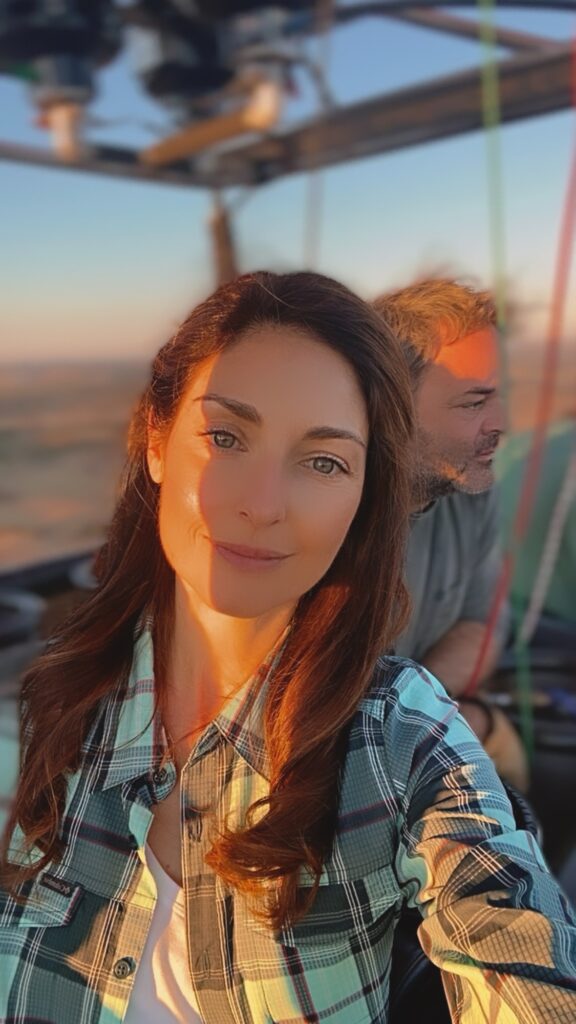

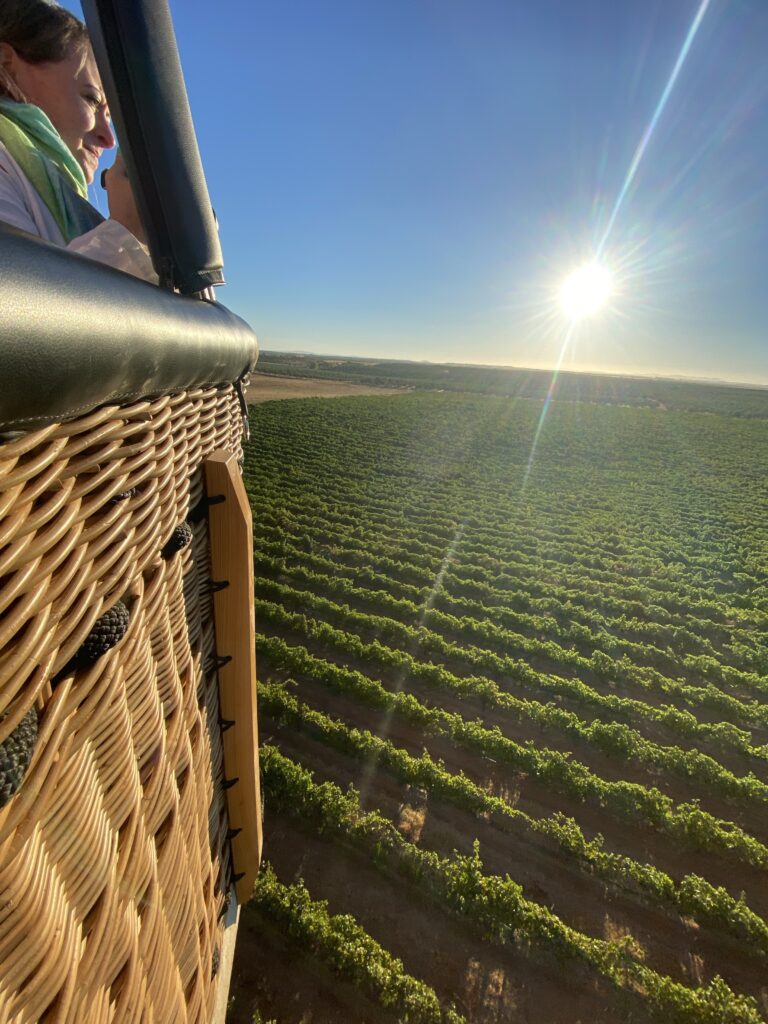
Back with our feet on the ground, we entered the forests to witness the ongoing operations of decortication, which is the phase of cutting and removing the cork bark once it reaches the necessary and ideal thickness to produce quality corks. This occurs on average every 9 to 10 years-meaning that a tree decorticated today will only be able to give useful bark again in a decade or so. And if it is a young plant one will have to wait almost 30 years for the first harvest. Certainly not an activity for impatient people.
With this in mind, it is easy to see how the role of the bark remover, the person who carves and removes the bark from the tree, is crucial and laden with responsibility. I have watched fascinated Portuguese farmers wielding hatchets like scalpels, carving firmly and with control to go as deep as necessary but not too deep so as not to injure the trunk, which would compromise the plant’s productivity for years. Determined, masters of their art, I watched them climb up the branches of the oaks to stick the handle of the axe under the incision and slowly peel off the bark, leaving the oaks half bare.
The forest slowly changed color unevenly: in fact, each tree has different waiting times and is decorticated in different years. So to distinguish the ready plants from those still in the regrowth stage, farmers paint with white lime a clearly visible number on the trunk that corresponds to the current year.
I admired all around me a sea of trees in a thousand shades: ochre the newly hulled ones, hazelnut, chocolate and dark brown the others marking the elapsed time.
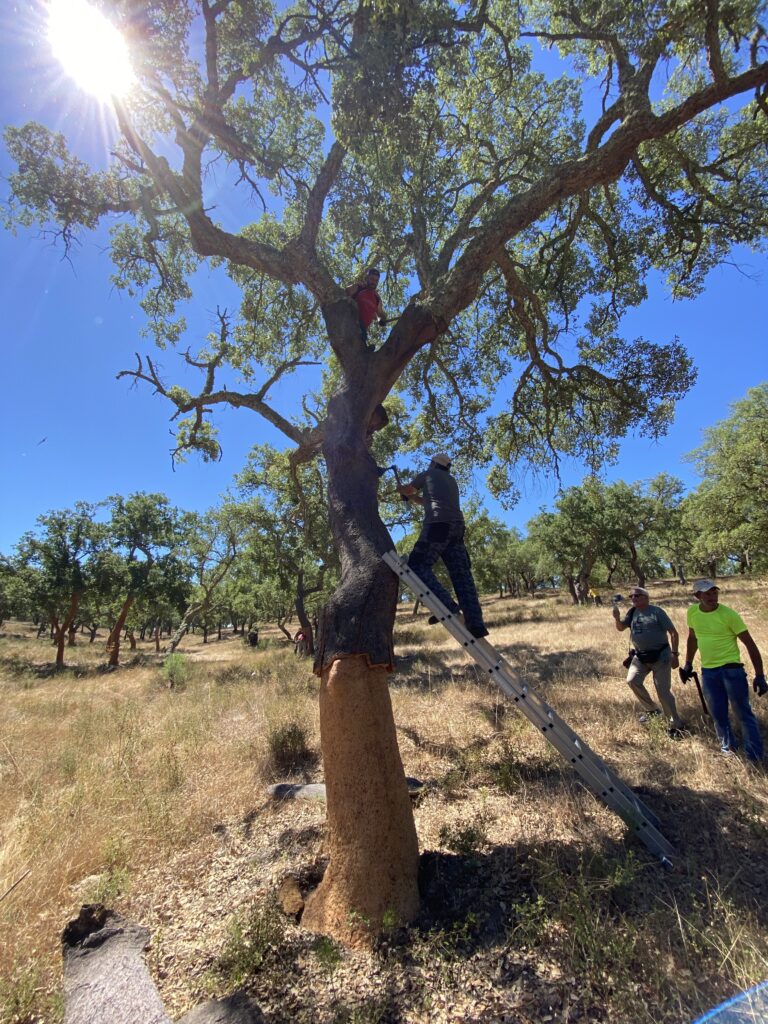
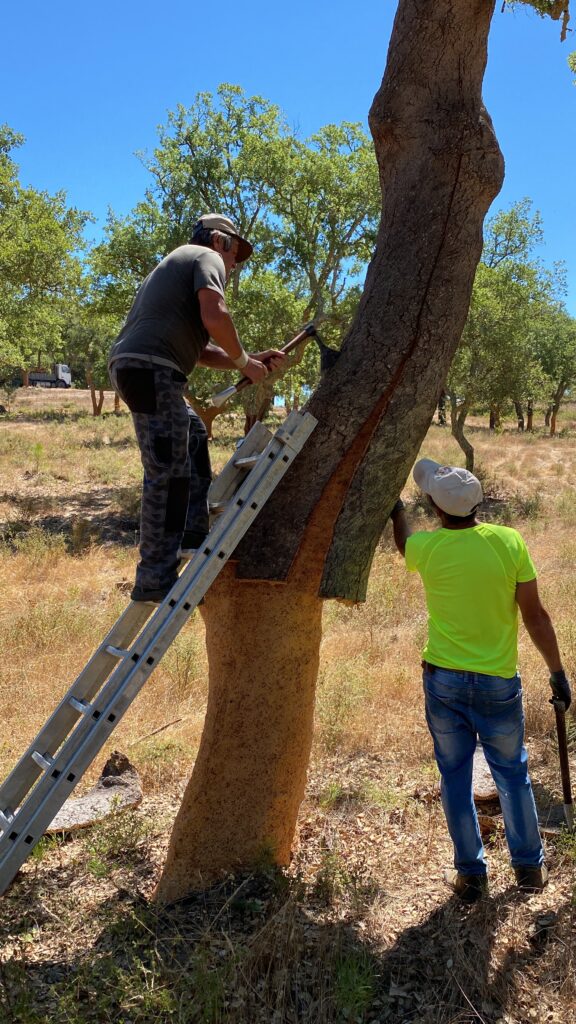
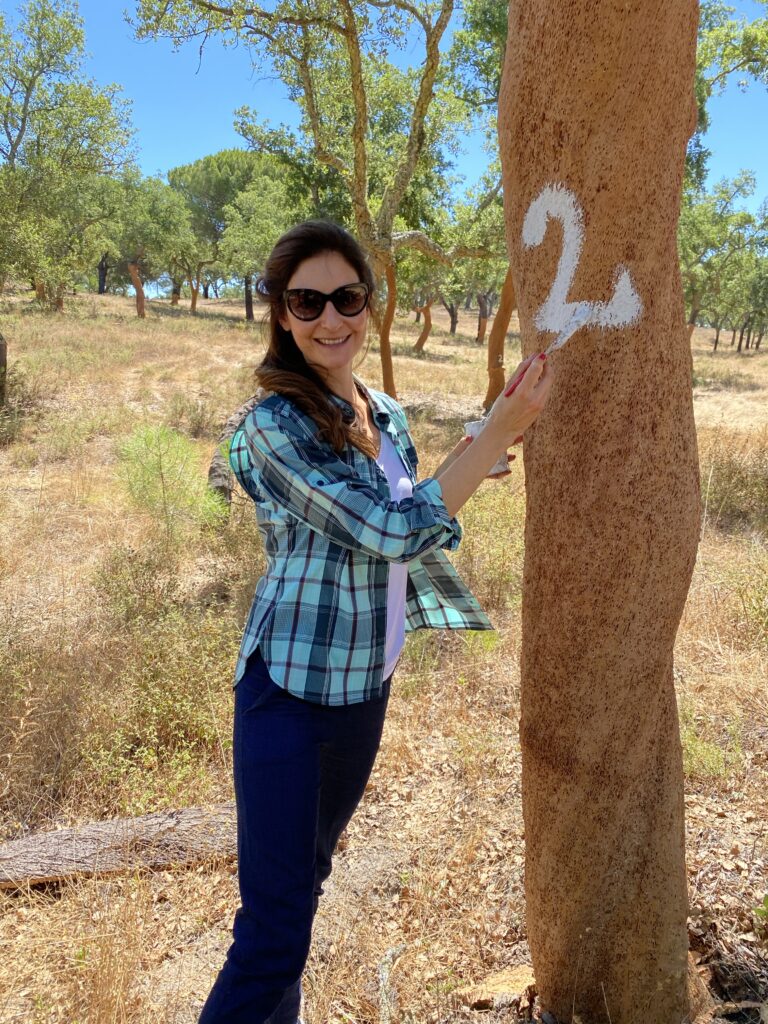
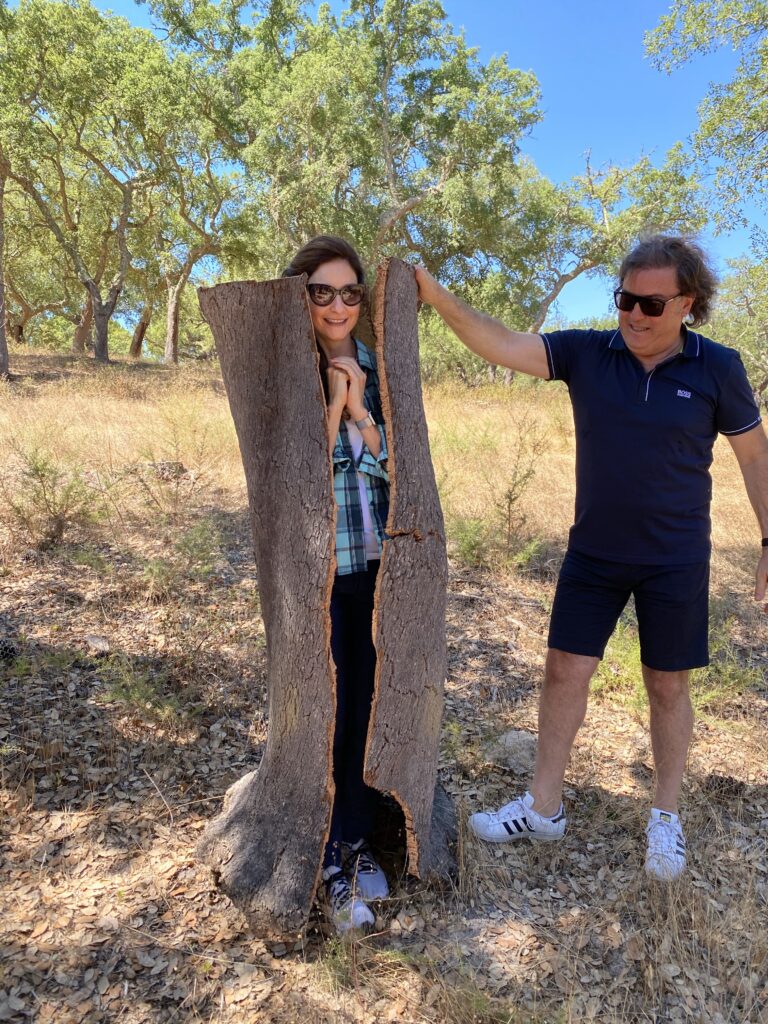
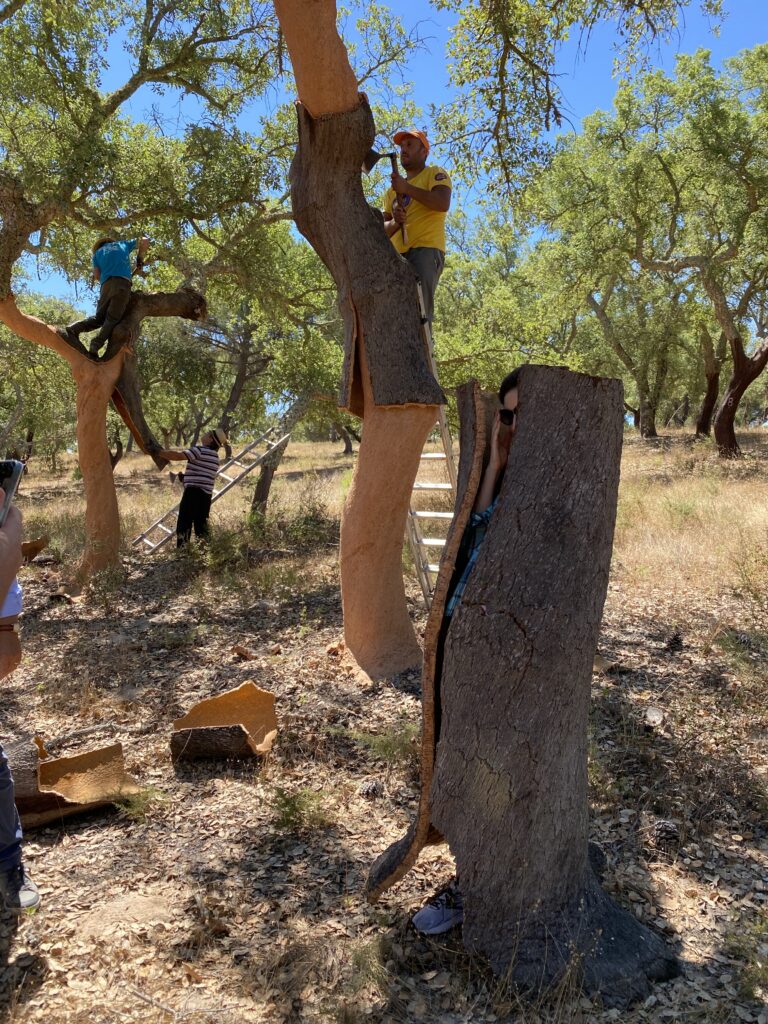
The work of the huller requires mastery: some of the farmers we met have been doing it for more than 45 years, handing down the art from son to son. One of the most beautiful scenes I carry in my heart from this trip is the lunch break of these men who were strong and delicate at the same time: sitting in the shade of the oaks, surrounded by tools, barks and a sapphire-blue sky, they refresh themselves with freshly cooked meat and fish on the rusty charcoal grill not far away, chatting, smiling, enjoying the quiet and conviviality. Many of them had been working since dawn, bearing the marks of fatigue, their hands irreparably ruined, but in that moment of peace and sharing, I saw them recharging. I didn’t understand what they were saying, but from the vivid expressions and eyes, I think it was a very close-knit team. A family.
I would have spent the whole afternoon with them, wanted to find out every single life story, but they had to work and we had to continue the journey into the world of cork. So together with the barks we went to the Amorim forestry headquarters, where the raw material is harvested and processed.
The cork spa
In Amorim’s large plant in Ponte de Sor the barks go through a process that I like to call the cork spa. In this video you can see the various stages, from curing, to boiling, to cutting and the first selection of the planks according to quality and thickness.
What impressed me was the way Amorim managed to automate some of the steps of this initial processing while retaining a totally artisanal line. It is unthinkable to produce on a large scale and ensure high quality standards by simply relying on human labor. Just think that Amorim produces 26,000,000 caps per day for a total of 5.7 billion in 2021. Impressive numbers.
I have visited other artisanal cork factories (link here to a Sardinian one) where I appreciated the craftsmanship of the die-cutters and the romanticism of the “noses” at quality control, by the way, almost always women. But on billions of corks it is unthinkable to apply these methods. Or at least not on the majority of production.
So Amorim has fielded the best industrial engineers who have patented effective and efficient machines for sorting and monitoring the quality and wholesomeness of cork. Here are the ones that fascinated me the most:
1. System for cutting and sorting planks by quality: an optical reader capable of selecting and sorting raw material by degree of compactness, uniformity, thickness.
2. Cap “radiography” system with two technologies: a first phase of compressed air injection to see if there are holes or channels inside the cap, a second phase of radiography (I call it that to simplify) that can identify wood residues, knots or defects inside the cap. These are all imperfections that are not visible to the naked eye and cannot be identified by a mere craft process.
3. Amorim’s flagship: the Naturity technology, since 2016, that manages to neutralize all microorganisms in the cork, effectively zeroing out the possibility of developing TCA and the famous corky smell. The sterilization of cork would be possible at very high temperatures that would, however, cause the corks to lose their elasticity and sealing characteristics. Amorim engineers from the NOVA School of Science and Technology then invented a vacuum system that achieves the results of boiling without reaching 100 degrees Celsius, which would deteriorate the cork. All while using 25 percent less energy and saving 10 percent CO2 compared to traditional sterilization systems.
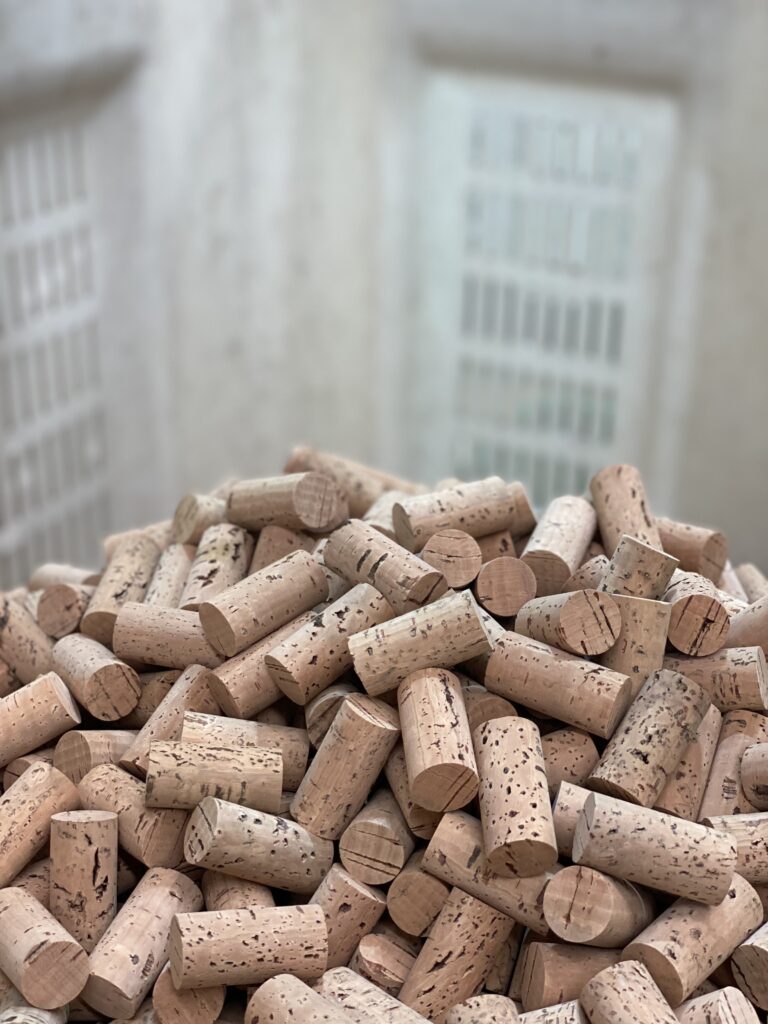
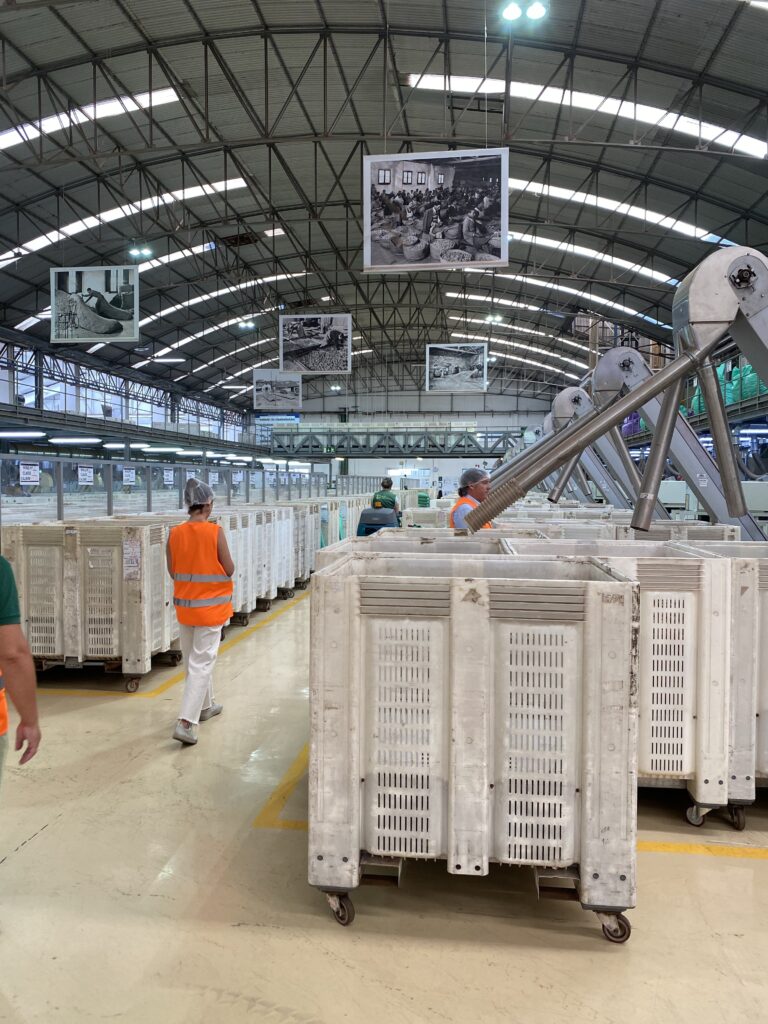
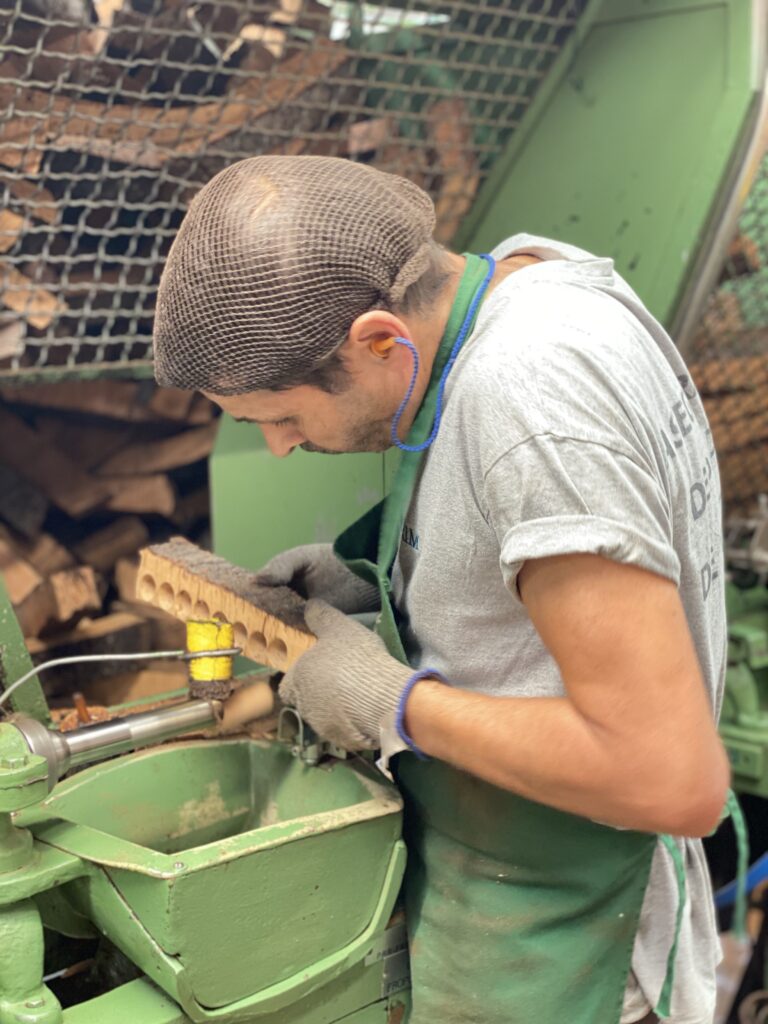
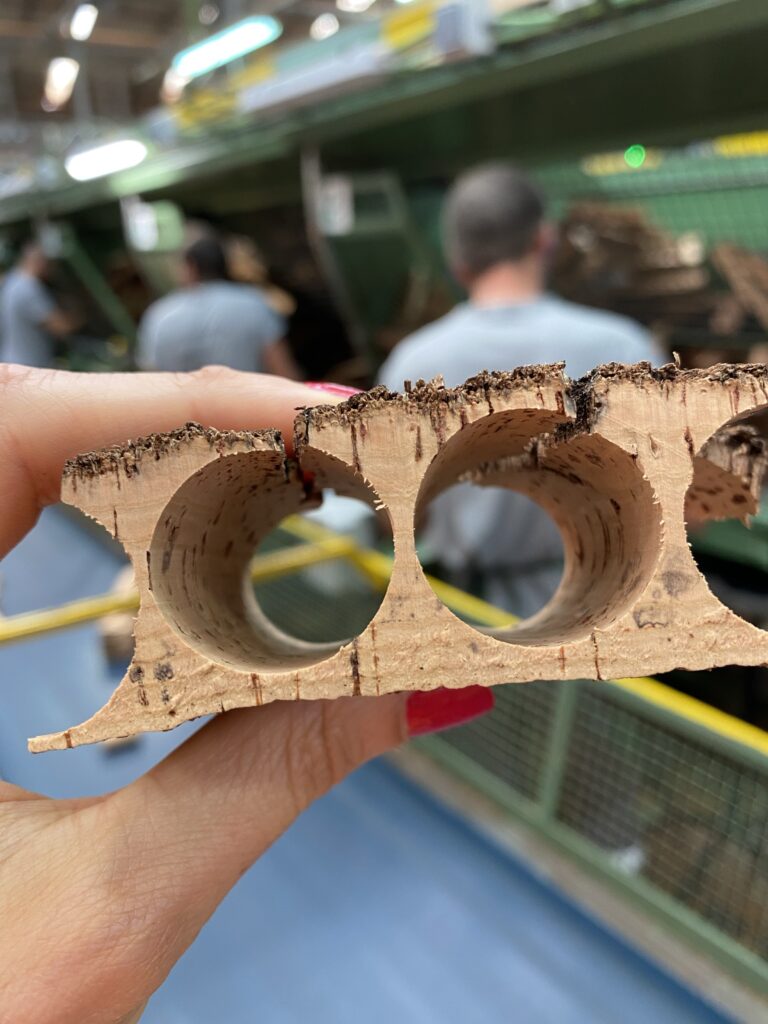
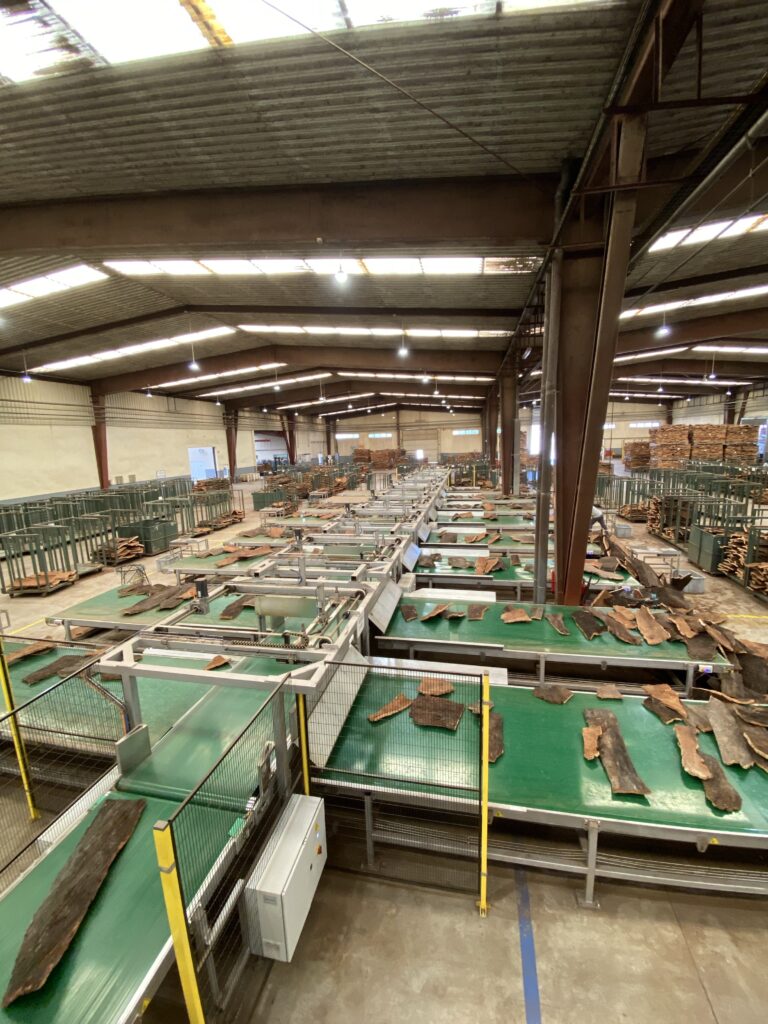
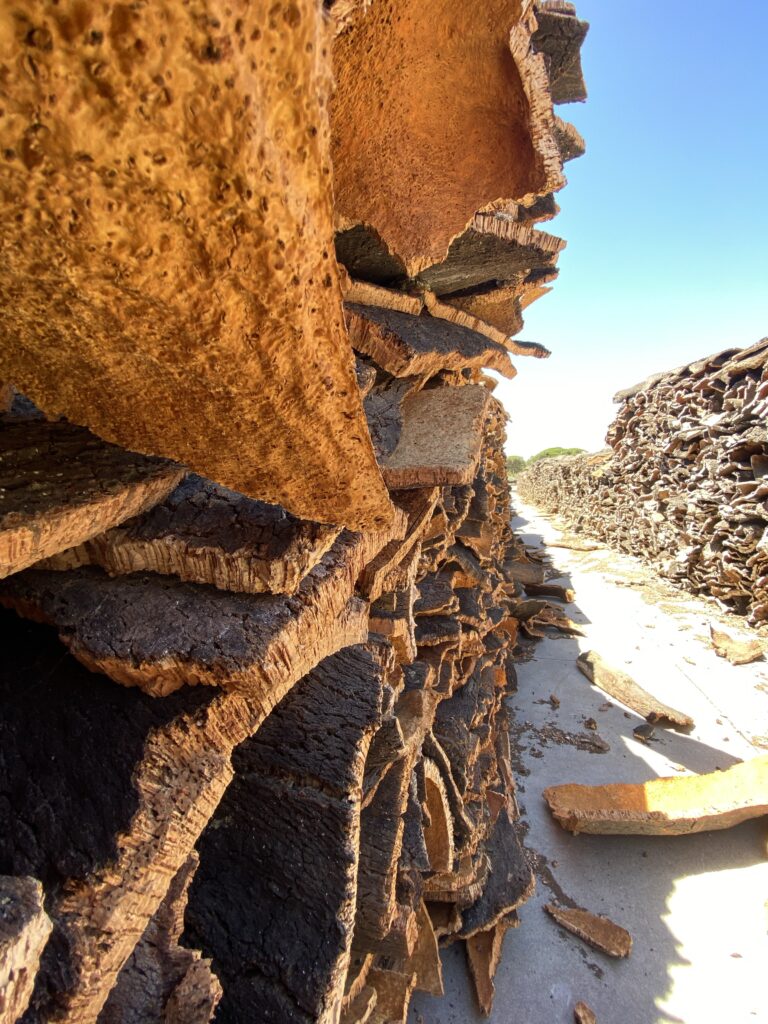
These are some of the processes that Amorim puts in place on all corks, regardless of quality or price. This allows the company to claim that Amorim closures guarantee 99 percent prevention of TCA. Something that no human nose could guarantee.
When the human factor makes a difference
This does not mean that Amorim is a company where the human factor is not valued, quite the contrary. I can say that during my journey I met excellent professionals and extraordinary men and women, starting with Carlos …. , CEO italia who accompanied us and played a key role in the growth of the Italian market, which today accounts for one third of Amorim’s sales.
But the humanity of Amorim and its employees also comes through in the cultural,social and environmental projects they have put on track in recent years.
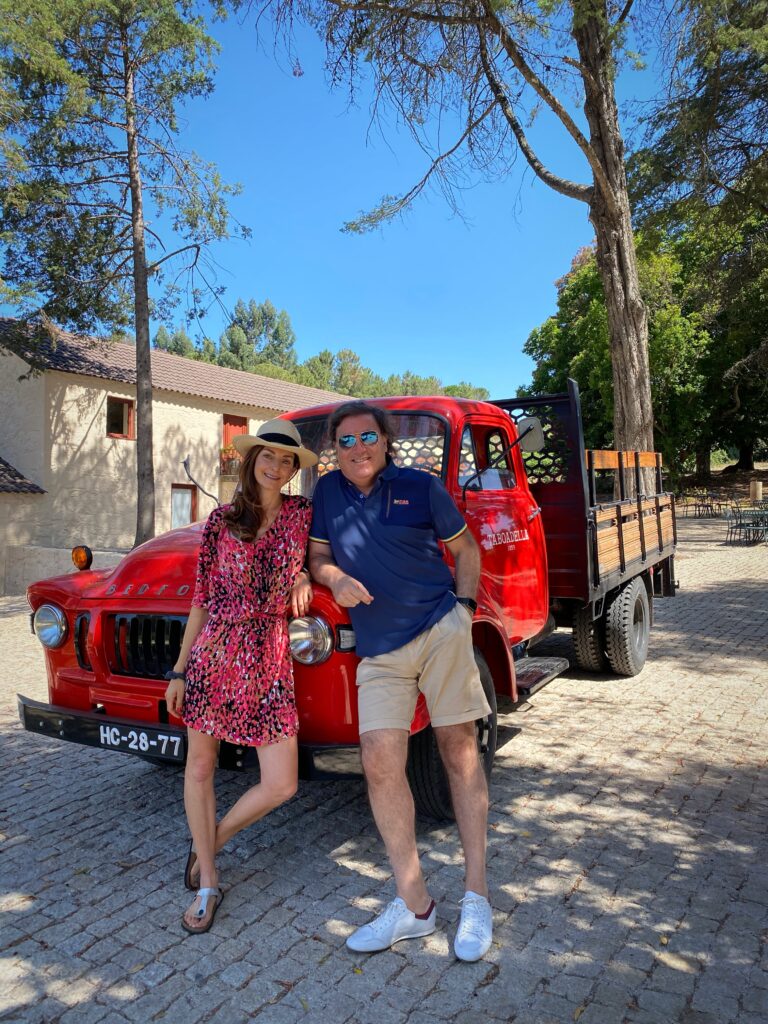
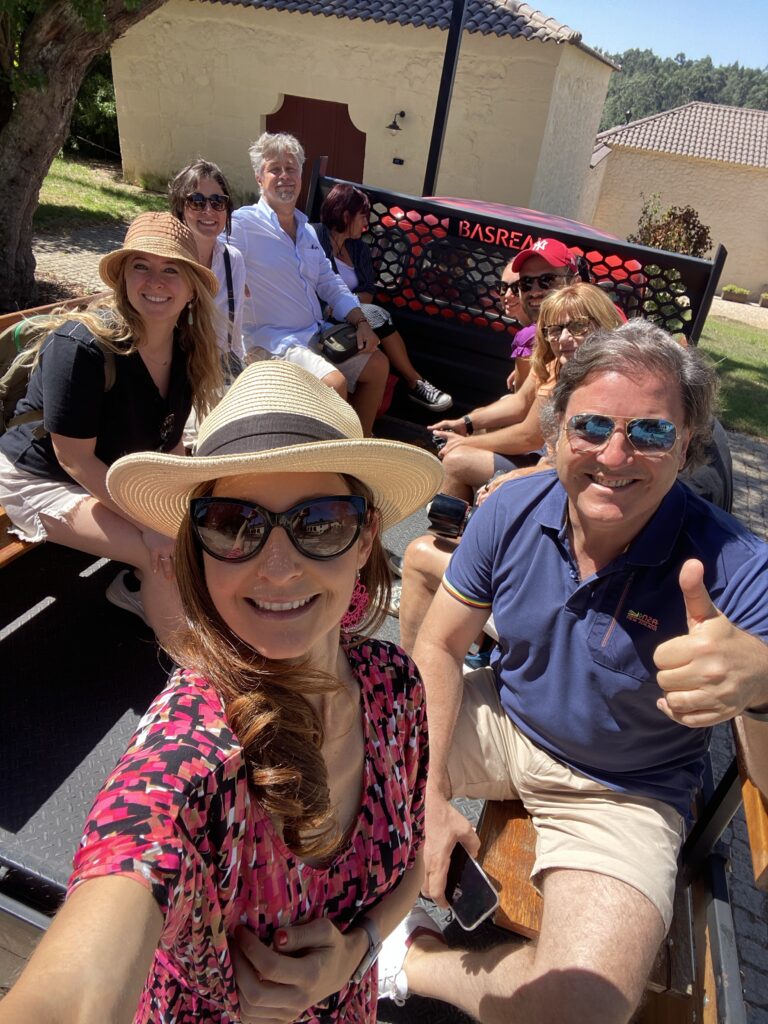

Carlos Veloso Dos Santos, CEO Amorim Italia
In Porto, inside the ultra-modern Wow museum complex, they have set up one of the most beautiful interactive museums in Europe dedicated to the cork supply chain to learn all about this versatile material that is also successfully used in sustainable building and decoration.
In Italy, Amorim has launched an important project to recover and recycle corks that are collected and sorted by 45 nonprofit organizations, including prisons and other associations to then give life to artistic objects, furniture and design made in Italy that you can admire and buy here.
